Featured Articles
Fast-Tracking Dominic “Trouble” Breazeale in 2015

A few years back, a heavyweight experiment took place in Southern California, where large athletes from football and basketball looking for options tried boxing. Linebackers, receivers, forwards and quarterbacks participated.
Dominic “Trouble” Breazeale emerged from the pack and fought his way to the US Olympic team in 2012. The tall former quarterback from Northern Colorado showed power and an understanding of amateur boxing.
After the Olympics, the Southern Californian decided to continue with boxing in spite of the differences between amateurs and pros.
“In the amateurs it’s all about fundamentals and mastering the one-two. You kind of learn to score points from that. As a pro, especially in the heavyweight division, it’s all about imposing your will on another man,” said Breazeale who now trains in Ontario, Calif.
Breazeale, who stands 6’7” and weighs about 240, has taken his athleticism and zeal to win inside the boxing ring, where no one can protect him or suggest plays that can succeed. It’s one on one and only the strong survive.
So far, 13 fights in, Breazeale (13-0, 12 Kos) has survived and will meet Victor Bisbal (21-2, 15 Kos) at the MGM Grand in Las Vegas on March 7. It’s part of the extravaganza promoted by Goossen Promotions that will be televised on NBC.
“Its primetime TV and you couldn’t ask for anything more. Just to be on the same card and exposure with Adrien Broner, Robert Guerrero and Keith Thurman,” said Breazeale from outside his gym on a warm summer-like night in Ontario. “I can’t wait for that. It’s a great network on NBC and you couldn’t ask for more.”
Just a few weeks ago one of his stablemates Deontay Wilder from Al Haymon’s Premier Boxing Champions captured the WBC heavyweight title. It was a revelation to Breazeale.
“I just liked the way he boxed him. Going in we knew that (Bermane) Stiverne was a little under-sized and Deontay had him as far as reach. He did a great job boxing him,” said Breazeale. “That’s one thing I kind of abandoned. Sometimes I like to get in the ring and just fight. I need to use my advantage. I need to use my reach. I need to use my jab and just stay consistent with that.”
Seeing Wilder win the WBC world title lit another fuse in the former Olympian.
“I think it just opens the door for us. All the other heavyweights out there know we’re coming to get all of the belts. Deontay Wilder has the WBC belt he won a couple of weeks ago, he boxed his butt off. They can’t say I don’t want the WBC belt because I want it too. Deontay better be on his toes about that situation. But there are plenty of belts out there to go around. We’re going to go after all of them,” Breazeale said.
After 13 pro fights is Breazeale ready?
A real fighter
Boxing trainer John Bray has seen many heavyweights come and go.
“You never know if someone can fight until they get hit,” said Bray, a former heavyweight too. “A lot of guys look good inside the ring and hit hard. But what happens when they get hit hard. That’s when you know if they’re really fighters.”
Bray cites several of Breazeale’s bouts where opponents were able to connect with painful shots. All it did was open up an arsenal of shots from the former Olympian. 2014 proved to be a good proving ground with opponents testing the heavyweight.
In January 2014, at Fantasy Springs Casino, a rather lumpy looking Homer Fonseca jumped in the ring to fans’ boos. They wanted to see a competitive match for Breazeale, so when Fonseca stepped between the ropes the fans were disappointed by his unimposing physique. When the fight began it was an explosion of blows. Fonseca came to fight and landed his share of bombs on Breazeale. Both refused to give ground and after three torrid rounds the fight was finally stopped. Breazeale had been tested thoroughly and showed he rather liked proving he could give and take in a real heavyweight battle. The fans saw a fight and others took note.
“He likes to fight. It’s so hard to find a big guy that likes to fight,” said Bray of his student Breazeale. “If you really think about him, there are a lot of big guys knocking people out. But as soon as they get hit, uh oh.”
Nagy
Next up was Nagy Aguilera, a heavyweight gatekeeper most known for defeating a former heavyweight champion Oleg Maskaev and also for his battles with Chris Arreola, Antonio Tarver and Tomasz Adamek. No one has an easy time with the Dominican, especially if he has time to train.
“It was one of those fights I learned from. I gained a lot of confidence from it. I did some good boxing skills, I did some fighting skills, a great inside game,” Breazeale recalled. “I hurt him with some shots, he hit me with a few good shots. It went well. It was a well experienced fight.”
Forced to go the distance, Breazeale unveiled his repertoire of boxing skills that had not been previously displayed. Early knockouts in his other fights had prevented fans from seeing all of his weaponry. Not against Aguilera, who wobbled but would not surrender. After eight rounds it went to a decision and Breazeale was declared the victor.
Bray was convinced he had a real heavyweight fighter.
“Here is a heavyweight that likes to fight. And he can punch. He has a great body attack and he’s coming up to the head. He showed that in the Nagy Aguilera fight,” said Bray. “You saw a little bit of that George Foreman with the pushing and stepping around. A little bit of that Jack Johnson with the picking and parrying. I think it’s just the beginning.”
Breazeale had passed his biggest test and now looks to reach contender status and perhaps go after a world title like Deontay Wilders,’ another of Haymon’s heavyweights.
“Here I am starting the third year and I’m looking to getting a belt at the end of this year for sure,” said Breazeale. “I always said I was going to be on the fast track and here I am.”
Bray likes his chances.
“I think that he went from suspect to prospect with the Nagy Aguilera fight. Hopefully he’s going to break through to the contender rankings,” said Bray. “I believe he’s going to be a heavyweight champion of the world. He has all the tools and he’s going to be an exciting heavyweight champion.”
Follow David A. Avila on the Twitter:
Featured Articles
Boxing Notes and Nuggets from Thomas Hauser
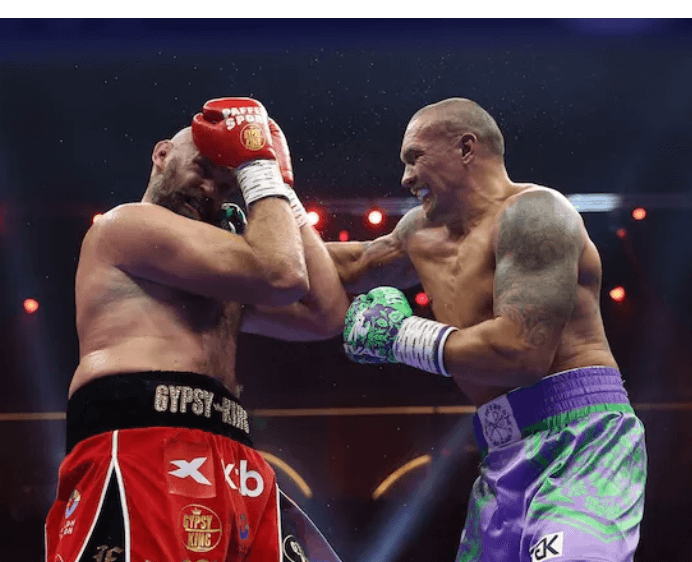
In recent years, there has been lavish praise and extensive criticism regarding Turki Alalshikh’s boxing initiative. Some of it has been warranted and some hasn’t. One issue deserves greater comment.
The judging has been pretty good.
Scoring a fight is subjective, which can open the door to bias, incompetence, and corruption.
Most people in boxing know who the good judges are. But some bad ones keep getting high-profile assignments. Why? Because they shade things toward the house fighter which is where the money lies.
When there’s a bad decision in boxing, almost always it favors the house fighter.
Overall, Turki Alalshikh’s fights have been marked by honest scoring.
Oleksandr Usyk went the distance four times against Tyson Fury and Anthony Joshua. Fury-Usyk I and Usyk-Joshua II could legitimately have been scored either way. It was in the Saudi’s financial interest (not to mention the interests of Frank Warren and Eddie Hearn) that Fury and Joshua win those fights. Yet Usyk won all four decisions.
Clearly, Turki Alalshikh wanted Hamzah Sheeraz to defeat Carlos Adames. Yet Adames retained his title when that bout was credibly scored a draw.
The list goes on.
Bad scoring trickles down from the top. Judges know that the monied interests behind a promotion want a certain fighter to win and that their receiving lucrative judging assignments in the future often depends on scoring the fight at hand a certain way.
The judging for Turki Alalshikh’s fights so far seems to have been based on the instruction, “Be fair. Get it right.”
Kudos for that.
****
Six years ago after unifying the four major cruiserweight titles, Oleksandr Usyk was honored by the Boxing Writers Association of America as its “Fighter of the Year.” That designation was repeated in 2024 in recognition of his unifying the heavyweight crown.
While in New York to accept his most recent honor, Usyk sat with former NFL MVP Boomer Esiason for an interview that will air in early-June on the nationally syndicated television show Game Time.
Oleksandr came across as thoughtful and likeable during the conversation.
He shared memories of his father: “My father was a military guy. He teach me like a street fight, to work a knife, shooting. I use jujitsu, karate, wrestling, kickboxing. I say, ‘Poppa, what we do this for?’ . . . He says, ‘We prepare’ . . . ‘For what we prepare?’ . . . ‘For life.’”
Usyk won a gold medal in the 201-pound heavyweight division at the 2012 London Olympics. But his father died before Oleksandr could return home and show the medal to him. After Usyk beat Tyson Fury to unify the heavyweight crown, he cried as he proclaimed, “Hey, poppa, we did it.”
“A lot of people in Ukraine who hear that, they cry too,” Oleksandr told Esiason. “Is normal. [Some] people, ‘Hey man! Don’t cry.’ Why not cry? I like to cry.”
Speaking of the size differential between Fury and himself, Usyk noted, “For me, is like a story. David and Goliath. I not afraid because boxing is a sport. Yeah, it’s a guy a little bigger for me. No problem.”
Asked how he would describe his fighting style,” Oleksandr answered, “It’s a wonderful style.”
“Boxing for me is a gentleman’s sport,” he added. “Just respect for my opponents. A lot of people make a show. But if you make a good show and then bad boxing – [with a wave of his hand] PFFFTHF! First in boxing is class and skill; then the show.’
He explained how his training regimen includes holding his breath underwater: “I make like a fight time. Three minutes underwater, one minute rest, twelve rounds. Is hard.”
What’s the longest that Usyk has held his breath underwater?
“My record is 4 minutes 47 seconds.”
The interview closed with Oleksandr appealing directly to the American people to support his Ukrainian homeland in its defense against Russian aggression.
“I’m not political. I’m just [a] man who lives in Ukraine who’s worried for my people.”
And he talked of having brought some Ukrainian soldiers to his fights as guests: “They’re my power, my angels.”
****
Don King has been the subject of an endless stream of anecdotes. Jody Heaps (who spent three decades as a senior creative director and executive producer at Showtime) adds one more to the mix.
“Don had just brought Mike Tyson to Showtime,” Heaps recalls. “We were doing a shoot with Don sitting in a barber chair and he was in a great mood. Toward the end, someone came over to me and said, ‘If Don has the time, could you ask him about his favorite movie scene for a promotion we’re doing.’ So I asked Don what his favorite movie scene was. He told me movies weren’t his thing and said, ‘You tell me. What’s my favorite scene?’
“I talked it over with the crew,” Heaps continues. “Then I suggested the shower scene in Psycho. I figured Don had seen it. Everybody has seen it. But Don told me, ‘I don’t know anything about it. What happens in that scene?’ So I explained that you see Janet Leigh in shower. Then you see a silhouette on the shower curtain. The shower curtain is pulled aside. You see the knife plunging in again and again. And the last thing you see is blood circling down the drain.”
“Don says, ‘Okay; I’ve got it.’ He looks right at the camera and, with incredible drama, starts recreating the scene. Five seconds in, everyone is mesmerized. He takes us through Janet Leigh in the shower, the silhouette on the shower curtain, the knife plunging in again and again, the blood circling down the drain. And at the end, he laughed that loud booming laugh of his and proclaimed, ‘It was a clean kill!’
“There was stunned silence,” Heaps says in closing. “Don made it sound like it was real and he’d been there when it happened.”
****
Like most sports fans, I watched the first round of the NFL draft on April 24. I’ll do the same when the NBA draft is held on June 25. Allow me the following thoughts.
Adam Silver seems like a basketball fan.
Roger Goodell seems like a fan of making money.
Adam Silver looks sincere when he hugs a draftee.
Roger Goodell looks like he wants to take a shower.
Adam Silver comes across as though he has a sense of humor and can laugh at himself.
Roger Goodell comes across as though he doesn’t and can’t.
Adam Silver has James Dolan to deal with and keeps him in line.
Roger Goodell can’t put a lid on Jerry Jones.
Adam Silver is booed in good-natured fashion by fans at the draft.
Roger Goodell is booed with rabid enthusiasm
****
And last; a memory of Turki Alalshikh’s May 2 fight card in Times Square . . .
Security was tight. The police had been instructed to keep pedestrians on the sidewalk moving as they passed the ring enclosure which was blocked from view by a ten-foot-tall fence. Well before the event began, a young man with a video camera planted himself on the sidewalk across the street from the enclosure. A uniformed police officer approached and the following colloquy occurred.
Cop: I’m sorry, sir. You’ll have to move.
Young man: I’m with the media.
Cop: And I’m with the New York Police Department. You’ll have to move.
Thomas Hauser’s email address is thomashauserwriter@gmail.com. His next book – The Most Honest Sport: Two More Years Inside Boxing – will be published this month and is available for preorder at: https://www.amazon.com/Most-Honest-Sport-Inside-Boxing/dp/1955836329
In 2019, Hauser was selected for boxing’s highest honor – induction into the International Boxing Hall of Fame.
To comment on this story in the Fight Forum CLICK HERE
Featured Articles
Hiruta, Bohachuk, and Trinidad Win at the Commerce Casino
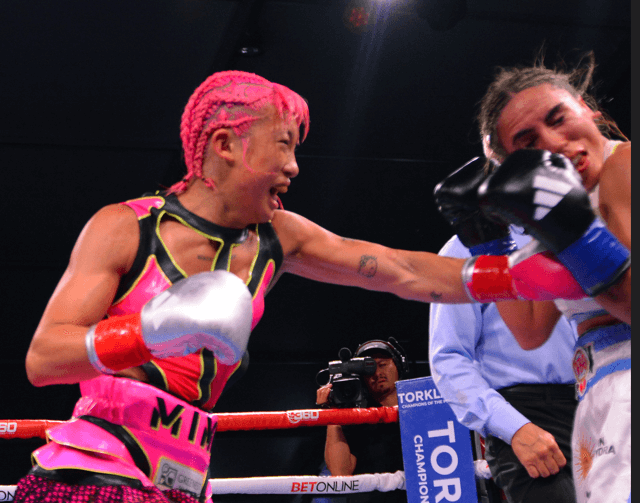
Hiruta, Bohachuk, and Trinidad Win at the Commerce Casino
A jam-packed fight card featuring a world champion, top contenders and knockout artists delivered the action but no knockouts on Saturday in the Los Angeles area.
You can’t have everything.
Mizuki “Mimi” Hiruta (8-0, 2 KOs), fresh with a multi-year 360 Boxing Promotion’s contract deal, once again fought and defended the WBO super fly world title and this time against Argentina’s Carla Merino (16-3, 5 KOs) at Commerce Casino.
It was expected to be her toughest test.
Hiruta, who is trained and managed by Manny Robles, showed added poise and a sharp jab that created and established an invisible barrier that Merino could never crack. It was as simple as that.
A sharp right jab from the southpaw Japanese world champion in the opening round gave Merino something to figure out. When the Argentine fighter tried to counter Hiruta was out of range. That distance was a problem that Merino could not solve.
The pink-flame-haired Hiruta looks like an anime figure incapable of violence. But whenever Merino dared unload a combination Hiruta would eagerly pounce on the opportunity. It was clear that the champion’s speed and power was a problem.
For more than a year Hiruta has been training in Southern California and has sparred with numerous styles and situations in the talent-crazy Southern California area. Each time she fights the poise and polish gained from working with a variety of talent and skill partners seems to add more layers to the Japanese fighter’s arsenal.
After six rounds of clear control by Hiruta, the Argentine fighter finally made an assertive move to change the momentum with combination punching. Both exchanged but Hiruta cornered Merino and opened up with a seven-punch barrage.
In the eighth round Merino tried again to force an exchange and again Hiruta opened up with a three-punch combo followed by a four-punch combo. Merino dived inside the attack by the Japanese champion and accidentally butted Hiruta’s head. No serious damage appeared.
Merino tried valiantly to exchange with Hiruta but the strength, speed and agility were too much to overcome in the last two rounds of the fight. Left hand blows by the champion connected solidly several times in the final round.
After 10 rounds all three judges saw Hiruta the winner by decision 98-92 twice and 99-91. The fighter from Tokyo retains the WBO super fly title for the fourth time.
Bohachuk Wins
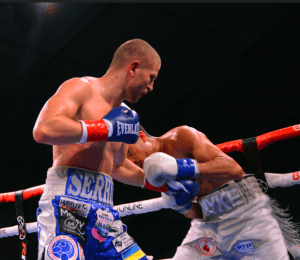
Ukraine’s Serhii Bohachuk (26-2, 24 KOs) defeated Mykal Fox (24-5, 5 KOs) by unanimous decision but had problems corralling the much taller fighter after 10 rounds in a super welterweight match.
It was only the second time Bohachuk won by decision.
Fox used movement all 10 rounds that never allowed Bohachuk to plant his feet to deliver his vaunted power. But though Fox had moments, they were not enough to offset the power shots that did land. Two judges scored it 97-93 for the Ukrainian and another had it 98-92
“Good experience for me,” said Bohachuk of Fox’s movement.
King of LA
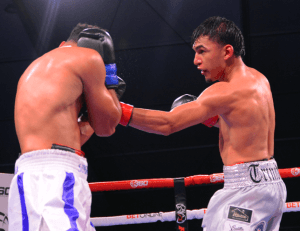
In a super featherweight match Omar “King of LA” Trinidad (19-0-1, 13 KOs) dominated Nicaragua’s Alexander Espinoza (23-7-3, 8 KOs) but never came close to knocking out the spirited fighter. But did come close to dropping him.
The fighter out of the Boyle Heights area in the boxing hotbed of East L.A. was able to exchange freely with savage uppercuts to the body and head, but Espinoza would not quit. For 10 rounds Trinidad battered away at Espinoza but a knockout win was not possible.
After 10 rounds all three judges favored Trinidad (100-90, 99-91, 98-92) who retains his regional WBC title and his place in the featherweight rankings.
“I’m living the dream,” said Trinidad.
Maywood Fighter Medina on Target
Lupe Medina (10-0, 2 KOs) proved ready for the elite in knocking down world title challenger Maria Santizo (12-6, 6 KOs) and winning by unanimous decision after eight rounds in a minimumweight match up.
Medina, a model-looking fighter out of Maywood, Calif, accepted a match against Santizo who had fought three times against world titlists including L.A. great Seniesa Estrada. She looked perfectly in her element.
Behind a ramrod jab and solid defense, Medina avoided the big swinging Santizo’s punches while countering accurately. For every home run swing by the Guatemalan fighter Medina would connect with a sharp right or left.
In the fifth round, Santizo opened up with a crisp three-punch combination and Medina opened up with her own four-punch blast that seemed to wobble the veteran fighter. Medina stepped on the gas and fired strategic blows but never left herself open for counters.
Medina didn’t waste time in the sixth round. A crisp one-two staggered Santizo who reeled backward. The referee ruled it a knockdown and Santizo was in trouble. Medina went into attack mode as Santizo pulled every trick she knew to keep from being overrun by the Maywood fighter.
In the last two rounds Medina seemed to look for the perfect shot to end the fight. Santizo kept busy with short shots and stayed away from meaningful exchanges. Medina also might have been gassed from expending so many punches in the prior round.
The two female fighters both seemed to want a knockout in the eighth round. Santizo was wary of Medina’s power and dived in close to smother Medina’s firing zone. Neither woman was able to connect with any significant shots.
After eight rounds all three judges scored in favor of Medina 77-74, 76-75 and 80-71.
It was proof Medina belongs among the top minimumweight fighters.
Other Bouts
In a super welterweight fight Michael Meyers (7-2) defeated Eduardo Diaz (9-4) by unanimous decision in a tough scrap. Mayers proved to be more accurate and was able to withstand a late rally by Diaz.
Abel Mejia (8-0) defeated Antonio Dunton El (6-4-2) by decision after six rounds in a super feather match.
Jocelyn Camarillo (4-0) won by split decision after four rounds versus Qianyue Zhao (0-2) in a light flyweight bout.
Photos credit: Al Applerose
To comment on this story in the Fight Forum CLICK HERE
Featured Articles
David Allen Bursts Johnny Fisher’s Bubble at the Copper Box

The first meeting between Johnny Fisher, the Romford Bull, and David Allen, the White Rhino, was an inelegant affair that produced an unpopular decision. Allen put Fisher on the canvas in the fifth frame and dominated the second half of the fight, but two of the judges thought that Fisher nicked it, allowing the “Bull” to keep his undefeated record. That match was staged last December in Riyadh, Saudi Arabia, underneath Usyk-Fury II.
The 26-year-old Fisher, who has a fervent following, was chalked a 13/5 favorite for the sequel today at London’s Copper Box Arena. At the weigh-in, Allen, who carried 265 pounds, looked as if he had been training at the neighborhood pub.
Through the first four rounds, Fisher fought cautiously, holding tight to his game plan. He worked his jab effectively and it appeared as if the match would go the full “10” with the Romford man winning a comfortable decision. However, in the waning moments of round five, he was a goner, left splattered on the canvas.
This was Fisher’s second trip to the mat. With 30 seconds remaining in the fifth, Allen put him on the deck with a clubbing right hand. Fisher got up swaying on unsteady legs, but referee Marcus McDonnell let the match continue. The coup-de-gras was a crunching left hook.
Fisher, who was 13-0 with 11 KOs heading in, went down face first with his arms extended. The towel flew in from his corner, but that was superfluous. He was out before he hit the canvas.
A high-class journeyman, the 33-year-old David Allen improved to 24-7-2 with his 16th knockout. He promised fireworks – “going toe-to-toe, that’s just the way I’m wired” – and delivered the goods.
Other Bouts of Note
Northampton middleweight Kieron Conway added the BBBofC strap to his existing Commonwealth belt with a fourth-round stoppage of Welsh southpaw Gerome Warburton. It was the third win inside the distance in his last four outings for Conway who improved to 23-3-1 (7 KOs).
Conway trapped Warburton (15-2-2) in a corner, hurt him with a body punch, and followed up with a barrage that forced the referee to intervene as Warburton’s corner tossed in the white flag of surrender. The official time was 1:26 of round four. Warburton’s previous fight was a 6-rounder vs. an opponent who was 8-72-4.
In the penultimate fight on the card, George Liddard, the so-called “Billericay Bomber,” earned a date with Kieron Conway by dismantling Bristol’s Aaron Sutton who was on the canvas three times before his corner pulled him out in the final minute of the fifth frame.
The 22-year-old Liddard (12-0, 7 KOs) was a consensus 12/1 favorite over Sutton who brought a 19-1 record but against tepid opposition. His last three opponents were a combined 16-50-5 at the time that he fought them.
Also
In a bout that wasn’t part of the ESPN slate, Johnny Fisher stablemate John Hedges, a tall cruiserweight, won a comprehensive 10-round decision over Liverpool’s Nathan Quarless. The scores were 99-92, 98-92, and 97-93.
Purportedly 40-4 as an amateur, Hedges advanced his pro ledger to 11-0 (3). It was the second loss in 15 starts for the feather-fisted Quarless, a nephew of 1980s heavyweight gatekeeper Noel Quarless.
Photo credit: Mark Robinson / Matchroom
To comment on this story in the Fight Forum CLICK HERE
-
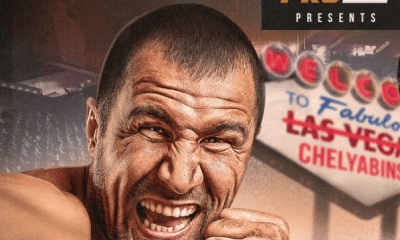
 Featured Articles4 weeks ago
Featured Articles4 weeks ago‘Krusher’ Kovalev Exits on a Winning Note: TKOs Artur Mann in his ‘Farewell Fight’
-
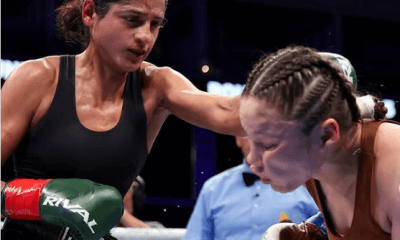
 Featured Articles4 weeks ago
Featured Articles4 weeks agoGabriela Fundora KOs Marilyn Badillo and Perez Upsets Conwell in Oceanside
-

 Featured Articles4 weeks ago
Featured Articles4 weeks agoFloyd Mayweather has Another Phenom and his name is Curmel Moton
-

 Featured Articles4 weeks ago
Featured Articles4 weeks agoArne’s Almanac: The First Boxing Writers Assoc. of America Dinner Was Quite the Shindig
-
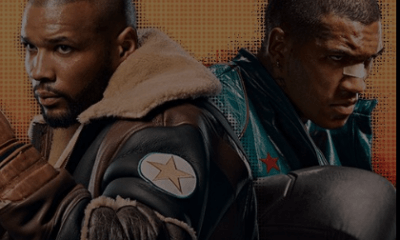
 Featured Articles3 weeks ago
Featured Articles3 weeks agoAvila Perspective, Chap. 323: Benn vs Eubank Family Feud and More
-
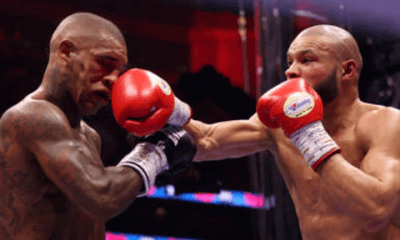
 Featured Articles3 weeks ago
Featured Articles3 weeks agoChris Eubank Jr Outlasts Conor Benn at Tottenham Hotspur Stadium
-
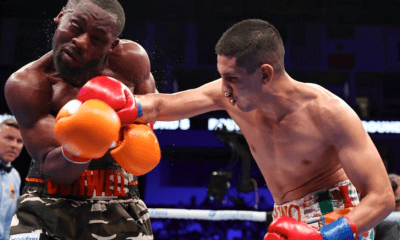
 Featured Articles3 weeks ago
Featured Articles3 weeks agoJorge Garcia is the TSS Fighter of the Month for April
-
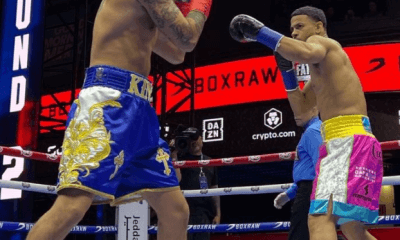
 Featured Articles2 weeks ago
Featured Articles2 weeks agoRolly Romero Upsets Ryan Garcia in the Finale of a Times Square Tripleheader

















